![]()
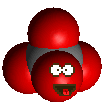 |
More Molecules with |
![]()
Rudolphomycin and RednoseRudolphomycin is a antitumor antibiotic compound. It was named following a series of such molecules derived from 'bohemic acid' - which was given its name because the discoverer Dr Nettleton of the Bristol-Myers Compnay was an avid opera fan and called it after the Puccini opera La Bohème. Derivatives of this were then given names from characters in the opera, such as mussettamycin and marcellomycin, after Musetta and Marcello, and rudolphomycin after the character Rudolph. Other molecules named in a similar fashion include: alcindoromycin, bohemamine, collinemycin, mimimycin, and schaunardimycin. According to his daughter Mignon, the joke in their family was that their father started naming his chemical compounds after opera characters because he ran out of daughters, all four of which had been named after female opera characters. (Mignon was named from the opera Mignon by Ambroise Thomas). On degradation of rudolphomycin, a new sugar was obtained, which was christened 'rednose'. This rather silly name was probably allowed to stand since the paper was submitted on December 21st 1978, and the Journal editor probably had the Yuletide spirit! Again, according to Mignon, her father actually got reprimanded at the company for not taking his job seriously enough. Unlike the Journal editor, the company bosses were not filled with the Christmas spirit, and it was probably long past December when they found out about it. However, since the name had been accepted already, there was nothing they could do about it. The same group also named a new antibiotic Rebeccamycin, which is also apparently from an opera popular at the time (probably Rebecca by Wilfred Josephs, based on the book by Daphne du Maurier). Thanks to Janet McBride for suggesting these Christmas-ey molecules, to Jan Linders for rebeccamycin, and to Mignon Schriek (nee Nettleton) for the insight into her father's naming of these compounds. More info: J. Am. Chem. Soc. 101 (1979) 7041, and J. Antibiotics 15 (1987) 668. |
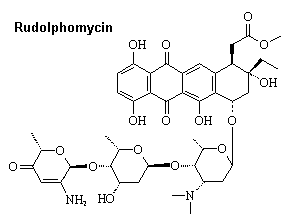  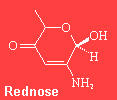 |
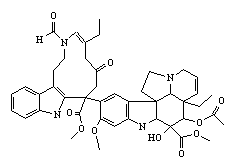 |
CatherineI don't know much about this molecule except that its name comes from the plant Catharanthus roseus. I'm surprised, though, that it's not wheel shaped... |
Complicatic AcidThis molecule didn't get its name because it was complicated to make, rather from the plant Stereum complicatum from which it was isolated. |
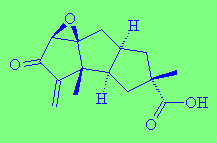 |
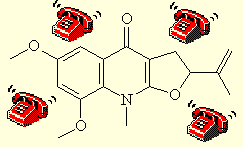 |
PtelefoloneThis molecule rings a bell...It gets its name from the hop tree Ptelea trifoliata, and is composed of a ring ketone - or should that be called a ring-tone! |
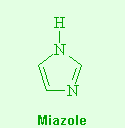 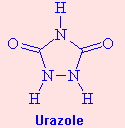 |
Miazole and UrazoleIf you pronounce the 'a' as in 'cat', and the 'z' as an 's', then you get the classic chemistry joke: What's the difference between miazole and urazole? The size of the ring... Thanks to Steve Stinson for suggesting the azoles, and to Jan Linders for the reference to largazoles: K.E. Cole et al, JACS 133 (2011) 12473. |
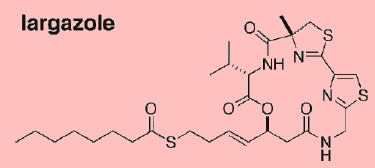 |
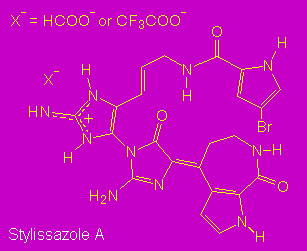 |
Stylissazoles and HymenialdisineAnother bunch of azoles have recently been extracted from the Pacific sea sponge (Stylissa carteri) and have been called stylissazoles... I'm sure I've met a few of those in my time... A structurally related molecule is called hymenialdisine (shown on the right)...I wonder if this is a constituent of extra-virgin olive oil...? Thanks to Jan Linders for the refs to styllisazoles: K. Patel et al., Angew. Chem. Int. Ed. 49 (2010) 4775. Thanks also to Thomas Bannister for correcting its structure, and also for suggesting hymenialdisine. |
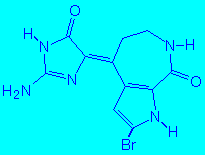 |
BirdcageThis molecule is so called because it, um, resembles a birdcage, duh. Maybe it should have been used to capture the aberrant pigeon from cristane, above... |
 |
BON-BONsThese ring structures are not what makes French sweets taste sweet. Heterocyclic dimers like the one shown in the picture (where you vary the R, R' and R" groups) are named from the fact that the ring atoms in sequence spell out BON-BON. |
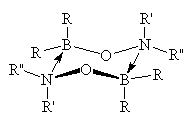 |
 |
Sonic HedgehogFruitfly genetics has a rich history of 'creative' nomenclature, often based on the appearance of flies that have the gene in a mutated form. One of these mutated genes made fruitfly embryos look like hedgehogs, since their spines grew all over their body rather than just in specific places - so it was name the 'hedgehog' gene. The vertebrate analogue was called 'Sonic' Hedgehog in order to distinguish it from its insect-forming version, and was given the abbreviation Shh. Geneticists studying other organisms are happy to elaborate on this when they can get away with it, and there are other variety of hedgehog genes called Indian hedgehog (Ihh), Desert hedgehog (Dhh), and even 'Tiggy-Winkle hedgehog' (TWhh)! There are also genes called Sleeping Beauty, Tubby, and most recently the puberty gene, "Harry Potter". Thanks to Greg Valure for suggesting this gene, and to Richard Williams from the Institute of Cancer Research and Geraldine VdA for providing some of the info about it, to David Bradley for the other gene names, and to Jan Linders for the robotnikin details. More details on Sonic. Ref: B.Z Stanton et al, Nature Chem. Biol. 5, (2009) 154. More fruitfly gene names and their stories can be obtained from www.flynome.com, and thanks to Jeremy Bracegirdle for supplying this link. |
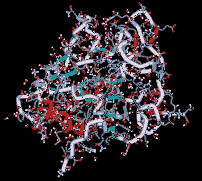 |
 |
JesteroneThis playful and mischievous molecule is found in a fungus, Pestalotiopsis jesteri, which lives inside yew trees. Thanks to Christopher Wells for info on this molecule. | 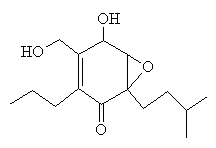 |
|
ParisiteThis mineral sounds like it grows on other minerals. It is found in Columbia, and it's named after J. J. Paris, who was a mine proprietor at Muzo, north of Bogota, Columbia. It is a member of the Bastnasite group of complex carbonate-fluoride minerals, and has the formula Ca(Nd,Ce,La)2(CO3)3F2. Thanks to Tanuki the Raccoon-dog for info on this mineral. | 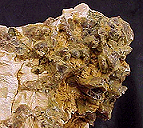 |
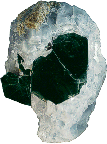 |
ClintoniteThis mineral sounds like it should be found in close proximity to 'internite' or 'lewinskyite'..., but it was actually named after American Statesman De Witt Clinton (1769-1828), not the notorious ex-President. Its formula is Ca(Mg,Al)3(Al3Si)O10(OH)2 (a calcium magnesium aluminosilicate hydroxide mineral), and it's related to margarite. It is found abundantly in the northern extent of New York. Thanks to Friedrich.Menges and Steven A. Hardinger for info on this mineral, and to Hans Hillewaert for the link to the image. |
SodamideThis is the shorthand name given to the common chemical, sodium amide, NaNH2. It sounds like it belongs in close proximity to other molecules in this list, such as arsole, anol, skatole, and maybe fruticolone...But I'm not letting it get anywhere near miazole! Thanks to Germanicus Hansa-Wilkinson for suggesting this molecule. |
 |
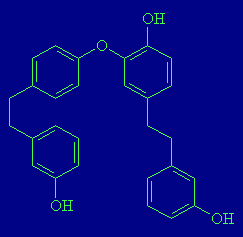 |
Small-breasted-dogYes, it really is called that, but in Spanish! The molecule is actually named 'Perrottetin-a' which (almost) literally means "small-breasted-dog" (Perro=dog, tetita=small breast). The molecule gets its name from the liverwort plant from whence it is extracted, Hepatica Radula perrottetii, which itself was named after the botanist George Samuel Perrottet (1793-1870). There is another related compound, perrottetinene, which is structurally similar to THC, the active ingredient in cannabis. Maybe this molecule should be called 'stoned small-breasted dog'! Thanks to Enrique Pandolfi and Kay Dekker for providing the info on this molecule. See: Y. Asakawa, K. Takikawa, M. Toyota, T. Takemoto, Phytochem., 21, (1982) 2481. |
CentaureidinCentaurs are creatures which are half horse, half human. The molecule centaureidin got its name because it was extracted from a flower called Centaurea corcubionensis, which is related to the cornflower. It was discovered along with a molecule named centaurein, found in the same plant. Thanks to Victoria Barclay from ACD in Toronto and to ShadowFox for providing the info on this molecule. Here is a scientific article about Centaureidin. | 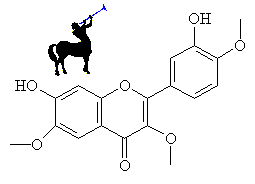 |
Magic Acid'Magic Acid' is the name given to one of the strongest of the inorganic 'superacids'. It is made by mixing together antimony pentafluoride (SbF5) and fluorosulphonic acid (HSO3F), and it is so strong (pKa = -20) that it is capable of protonating even saturated alkanes, like methane, to produce carbonium ions. Thanks to Indranil Sen from the Utah State University for suggesting magic acid, Roger Alder for magic methyl, and to Rob Towart for Magic F-1 (See: M. Cassano, et al, PLoS ONE 3, (2008) e3223). |  |
CrocidoliteThis has nothing to do with crocodiles, but is actually the name of the mineral form of blue asbestos, with formula Na2Fe5Si8O22(OH)2. It either got its name from the Greek word for 'woolly', or it was named from the geographic location of where it was first discovered. viz. the Crocodile River Valley in South Africa. This is just outside Nelspruit in Mpumalanga South Africa (look on the Eastern part of a SA map - next to the Kruger National Game Park). Thanks to Indranil Sen for suggesting this molecule and to Stuart Kidd and Grant Little for providing some of the information about it. |
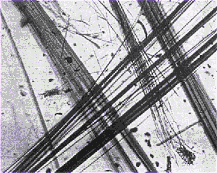 |
Piano StoolThese are a group of molecules made from a transition metal bonded to a cyclopentadienyl ligand, so that they resemble a 3-legged piano stool. I don't know if molecules have been made with other numbers of 'legs', such as milking stools, etc. But would a sample of this molecule be called a 'stool sample'? Thanks to Sean Pearce for suggesting this molecule, and to Dennis Gorden for the joke. | 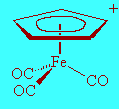 |
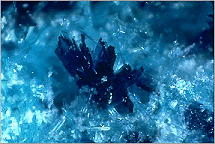 |
ShattuckiteThis mineral sounds painful, but is actually just named after the locality in which it is found, the Shattuck mine in Arizona. Its actual formula is Cu5Si4O12(OH)2. Thanks to Martin Harris for suggesting this mineral. |
G(olf) proteinsThese are a class of proteins called G-type proteins, some of which are linked to the olfactory system - hence the name G(olf) proteins. They help trigger the biochemical synthesis of neurotransmitters, which eventually leads to signalling, and gives us a sense of smell. Thanks to Boaz Laadan for suggesting this mineral. More info at: http://www.leffingwell.com/olfact3.htm |
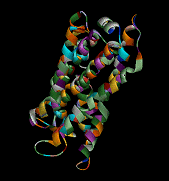 |
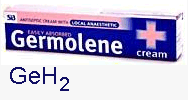 |
GermyleneThe GeH2 radical is called germylene, which is similar to an antiseptic ointment found in the UK called Germolene. I doubt that germolene contains germylene, though, as GeH2 is very toxic... Thanks to Victor Sussman for suggesting this molecule. |
KhanneshiteIt's amazing how this name got past the International Mineralogical Association when they approved the new mineral name. It was named after the discovery locality at Khanneshin, Afghanistan. All minerals have the suffix '-ite'. and so the name they gave to this mineral is - Khanneshite. I can only presume that there were no Scots on the committee that approved the name... I can't find any photos or structural images of khanneshite, so the image on the right is actually of the burbankite structure which, according to the literature is identical to that of khanneshite. Thanks to Brian Jackson from the National Museums of Scotland for suggesting this mineral. |
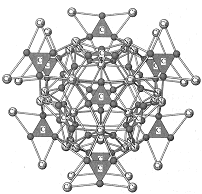 |
SEXSEX is the official abbreviation of sodium ethyl xanthate, which is a floatation agent used in the mining industry. Apparently you can get SEX in both solid and liquid forms (should that be hard and wet SEX?), and according to Australia's National Industrial Chemicals Notification and Assessment Scheme signs of high exposure to SEX include 'dizziness, tremors, difficulty breathing, blurred vision, headaches, vomiting and death'. Sound familiar...? There's another molecule that sometimes called 'sex'. A byproduct impurity in the explosive RDX, 1-acetyl-3,5,7-trinitro-1,3,5,7-tetrazacyclooctane, has been dubbed SEX by some researchers. I haven't yet found out why this acronym was used, other than to be silly and maybe to keep people awake during long, boring conference talks. But, again, it leads to some great descriptions in papers. After synthesis, the impure material can be called 'dirty sex' or even 'crude sex', and when extracted it can produce 'analytically pure sex'. Thanks to Joseph Wiman and for suggesting this molecule and Nicholas J. Welham for some of the info about KAX. Thanks also to Rob Schmidt for info about the RDX version of sex. |
 |
 |
AustinAustin has nothing to do with Austin cars, Austin Texas, or even Austin Powers...it's actually a mycotoxin, which comes from the fungus Aspergillus ustus, which might have given it it's name but I'm not sure. Thanks to Chris Fellows for suggesting this molecule and to Mark Johnston for suggesting how it got its name. |
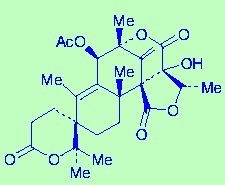 |
Technetium Cow'Cow' terminology comes from the nuclear industry, and it has nothing to do with the unfortunate cattle that live near nuclear power plants. A radionuclide, such as 99Mo (as its ammonium salt), is stored in a column, called a 'cow'. Its decay product, technetium-99m, is continually produced, and it can be flushed out of the "cow column" in a process called 'milking the cow'. The 'technetium cow' isotope is then used in bone scans, and has a 6 hour half-life. And I'm told that there used to be an 'Americium Cow' in Harwell in the 1950s. On a related theme, molybdic acid anhydride (MoO3) is often referred to as 'Moo'. Thanks to 'Plutonium' Page Sebring for providing the info about this element, Ian Ferguson for the Am Cow info, and to Jonathan Montgomery for info on Moo. | 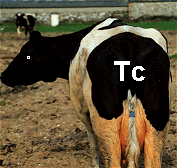 |
BowtiedieneThis is another molecule named after its shape - although the preferred name is spiropentadiene. Thanks to Isaiah Shavitt for providing the info about this molecule. |
 |
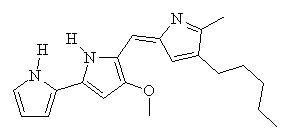 |
ProdigiozanThis molecule has a name that sounds like the Biblical 'prodigal son', who finally returned home. The structure shown is actually the related molecule, prodigiosin, since I can't find the structure of Prodigozan...well, not until it finally comes back here. :-) Both molecules are antibiotic pigments produced by Chromobacterium prodigiosum, with antimicrobial and cytotoxic properties. There are also a whole range of related molecules called prodiginines, presumably extracted from the same bacteria. Thanks to Susanne Wikman from Vaxjo University, Sweden, for providing the info about this molecule, and to Jan Linders for prodiginines. |
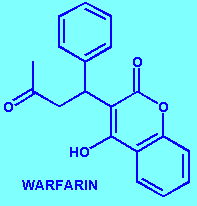 |
WarfarinThis molecule sounds like it could be a warfare agent, and it is...if you're a rat. It's a rat poison which stops the blood clotting, so the rats bleed to death. It also has medical uses in blood thinning and clot prevention. Apparently it gets its name since WARFarin was the first patentable product of the Wisconsin Alumni Research Foundation (WARF). An interesting story about warfarin is that it may have been used to kill Stalin. Thanks to Charles Turner and Michael Bailey and Larry Baum for providing the info about this molecule. |
(R)-DICHEDThis is the abbreviation for (R,R)-1,2-dicyclohexyl-1,2-ethanediol. The authors of the paper which describes it (Organometallics, 2001, 20, 2920) state "a number of DICHED boronic esters were screened by NMR...". I wonder who the real DIC-HED is? Thanks to Alex Yuen of the University of Sydney for providing the info about this molecule. |
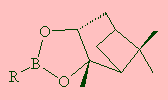 |
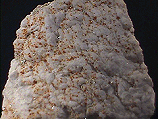 |
MicroliteMicrolite is not one of the components of a small airplane, but is a tantalum/niobium oxide mineral that can be slightly radioactive. Its correct formula is: (Ca, Na)2Ta2O6(O, OH, F). Thanks to Neil Brew for suggesting this mineral. More info can be found here. |
 |
beta-BuTXThis molecule sounds like the sales pitch for an exercise regime (get better buttocks using this!), but it's actually a snake venom with full name beta-Bungarotoxin). maybe the venom is more potent if the snake bites you on the Butx. :-) Thanks to Satan's Little Helper and Joerg Fruechtel for info on this molecule. |
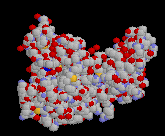 |
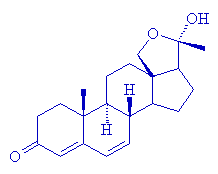 |
MirasorvoneThis molecule is part of the defensive chemistry of Thermonectus marmoratus, a beetle recently named the "sunburst diving beetle". The discoverers' at Cornell University named it in honour of the actress Mira Sorvino (right), who, as Dr Susan Tyler in the motion picture Mimic, successfully confronted the ultimate insect challenge. Thanks to Andy Cal for info on this molecule, and more info is available at: http://www.pnas.org/cgi/content/full/95/6/2733. |
 |
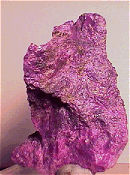 |
StichtiteStichtite is a lilac coloured mineral which is a hydrated magnesium chromium carbonate hydroxide. This is fairly common as streaks and small lenses in the green Serpentine in the metamorphic rocks of Western Tasmania, but is very rare elsewhere. It was named after Robert Sticht, a director of a mining company. Thanks to Martin Harris for info on this mineral. |
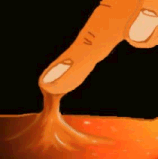 |
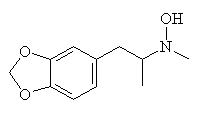 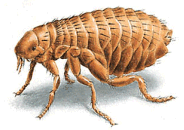 |
FleaThis is the commonly used name for the amphetamine, N-hydroxy-N-methyl-3,4-methylenedioxymethamphetamine (the N-hydroxylated version of MDMA, Ecstasy). The origin of its name is a bit strange, and is related to the fact that a commonly used code name for the parent compound, MDMA was ADAM. The 6-Methyl homologue was then called MADAM, and, following this pattern, the 6-Fluoroanalogue was to be FLADAM. So, with the N-Hydroxy analogue, the obvious choice was HADAM. But this brought to mind the classic description of Adam's earliest complaint, an infestation of fleas. The poem was short and direct: "Adam had 'em." So, in place of HAD 'EM, the term FLEA jumped into being. See: http://www.erowid.org/library/books_online/pihkal/pihkal081.shtml for a full description of this naming process. Thanks to J.J. Keating for info on this molecule. |
Wheelbarrow MoleculeHere's a molecule that has been designed to look like a wheelbarrow. It doesn't seem to have a full name yet, so it's just called Wheelbarrow Molecule. What's next, a molecular lawn mower? Pruning shears? Thanks to Plutonium Page for info on this molecule, and the full paper can be seen at: Tet. Lett. 44 (2003) 6261. |
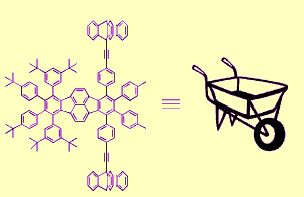 |
 |
BicyclohexylThis molecule not only has a name that sounds like a bicycle, ironically it even looks like one too. In fact, the bicyclohexyl compound with isopropyl and methyl sidechains (2-isopropyl-3'-methylbicyclohexyl, shown in the diagram) looks even more like a bicycle. There is also tricyclene, but unfortunately its structure looks nothing like a tricycle. Replacing the two cyclohexyl rings with two cyclobutadienyl rings would produce square tyres so the bike could ride on a road paved with repeated cycloidal-shaped bricks. Any doubts about this mathematical oddity should be directed to the French mathematician Jacques Tits (Yes, that's his real name! He mainly worked on group theory, and is famous for the so-called Tits buildings, Tits alternative and Tits group). Of course, this bike could only be used when it's very cold because of the instability of the four-membered rings. Thanks to Joris van den Heuvel for suggesting this molecule and to Geoff Hallas for correcting the structure, and to Dennis Gorden for the cyclobutadienyl ring version and info on Tits. |
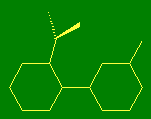 |
NanoPutian MoleculesAnd today's award for the 'How did they possibly get a grant to do that?' paper, goes to the J. Org. Chem. article by Chanteau and Tour from Rice University in Texas. It concerns making anthropomorphic molecules - i.e. molecules that look like humans...but why anyone would want to do this I don't know... They have been named NanoPutians, after the little men from Lilliput in the book 'Gulliver's Travels'. They come in many forms - the basic building block is the NanoKid (shown right), and from this other variants can be made, such as NanoAthlete and NanoBaker. Thanks to Neil Edwards for suggesting these molecules. |
 |
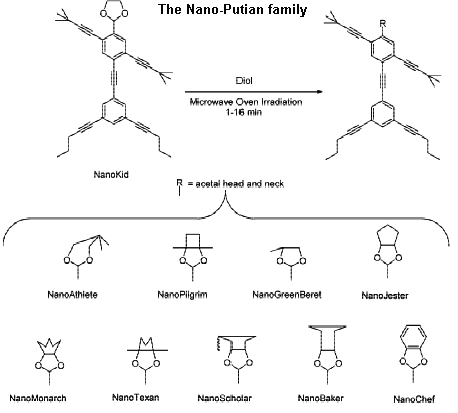 |
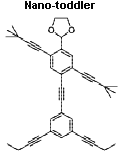 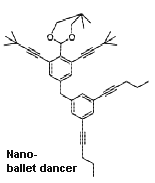 |
 |
Nanocars and NanotrikesThese are the perfect vehicles for driving Nanoputians around their nanoworld. They are made from a rigid framework of benzenes and acetylene groups, with either three or four C60 molecules attached at the ends as 'wheels'. I always wanted a compact... Thanks to Andrew Byro for suggesting these molecules. |
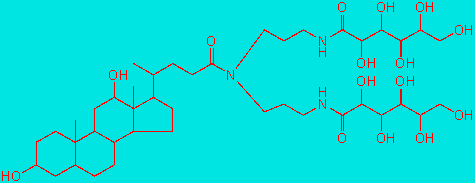 |
BIG CHAPThis wonderfully named molecule has nothing to do with reproductive hormones, but is actually a detergent with proper name N,N-bis(3-D-gluconamidopropyl)cholamide. Apparently the molecule has reduced electrostatic interactions that prevent your BIG CHAP getting stuck in a chromatography column... Thanks to Stephen FTM Thompson for suggesting this molecule. |
ASSThis is the commonly used acronym for argininosuccinate synthetase, which is a chemical found in the brain. So it seems some people really do think with their ASSes... Thanks to Allart Kok for suggesting this molecule. |
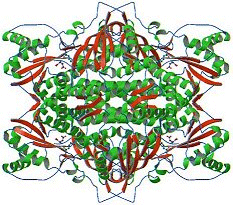 |
 |
Horseradish PeroxidaseThis is the version of the peroxidase enzyme that is isolated from the horseradish plant. Like all peroxidases, it converts harmful peroxide molecules (H2O2) into water molecules (H2O). It is also used to label proteins and nucleic acids as an alternative to radio labelling. The molecule to be labelled is attached to the horseradish peroxidase molecule, and the mixture is then exposed to a substrate that changes from clear to coloured when it is oxidized by HRP. When some of the variations of this enzyme are used as a labels for antibodies, they go by names such as anti-mouse, anti-rabbit, and worryingly...anti-human. Thanks to Andrew Patterson for suggesting this molecule. |
 |
PorkaneI'm pretty certain this is a spoof molecule, since one of the carbons has 5 bonds. These pig-shaped molecules, where the 'tail' can point up or down, are apparently isolated from porcine lard (pig fat). There are various derivatives of this, including norporkanone, epiporkanone and neoporkanone. For more info on the porkanes, see here. Thanks to Victor Nikolaev for suggesting this molecule. |
 |
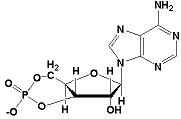 |
CAMPThis is actually short for cyclic adenosine monophosphate (cAMP) and is a signalling molecule which can be found in almost all eukaryotic organisms. For example, it is used as a nutrient sensor in yeast, and is one of the building blocks of DNA. I wonder if it's responsible for the so-called 'gay gene'... Thanks to Han Lim for suggesting this molecule and to Tom for info about it. |
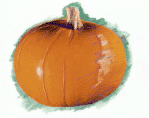 |
CucurbiturilThis molecule, which is shaped like a Halloween Jack'o'Lantern, is named after the Latin word for pumpkin (Curcubita pepo). It is now finding lots of use in medical drugs or in potential molecular electronic devices due to the fact that other long thin molecules can be threaded through the hole in the centre to make so-called 'rotaxanes'. |
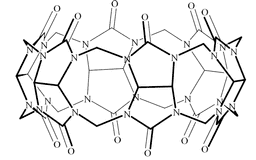 |
Old Yellow EnzymeThis is a flavoprotein that reversibly oxidises NADPH to NADP and a reduced acceptor. In fact, yellow enzymes are any of a number of enzymes having a flavin as a prosthetic group. Historically, NADPH dehydrogenase (occurring in plants and yeast) was called the Old Yellow Enzyme to distinguish it from D-amino acid oxidase, known as, of course, the New Yellow Enzyme. Thanks to John Moody for suggesting this enzyme. |
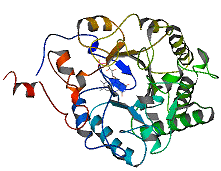 |
 |
LadderaneLadderane is a chain of fused cyclobutane rings that make up the bulk of dense membranes in certain unusual bacteria. They were discovered in anammox bacteria, which anaerobically oxidize ammonia to dinitrogen. The staircaselike structure of cis-fused cyclobutanes has never before been seen in nature. The most abundant lipid in the bacteria is the methyl ester of a C20 fatty acid with five fused rings. Other ladderane lipids contain three fused cyclobutane rings attached to a cyclohexane. Thanks to Erik Holtzapple for suggesting this molecule. |
Snottites These are gelatinous, dripping microbial draperies ("mucus stalactites") composed of elemental sulphur, iron oxide crusts, gypsum, and densely packed bacteria, and are found in caves. They are formally known as biovermiculations, although snottite is more descriptive. Snottites are produced by sulfurphilic micro-organisms and drip sulfuric acid with a pH of 0.3 to 0.7. Other microbial structures include "blue goo," which are lavender structures attached to the walls of the cave, and "red goo," a complex clay breakdown product containing clusters of bacterial cells and having a pH ranging from 3.9 to 2.5. Other microbial stalactites go by the fancifully names of "phlegm balls," "green slime," "punk rocks," "hairy sausages," "slime balls," and "beads on a string." Thanks to Charles Turner for suggesting these. |
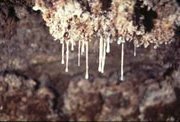 |
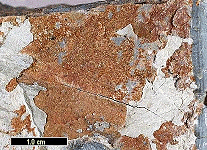 |
CoalingiteThis superbly named mineral takes some licking... It is actually an interstratified hydroxyl carbonate, but whenever anyone says its name, they normally lower their voices for the rest of the discussion, probably because it sounds like a contraction of coitus and lingus. But it was fact a mineral named after being found in the vicinity of the town of Coalinga, California, which was itself named after 'Coaling Station A'. Thanks to Phillip W Barak of the Virtual Museum of Minerals and Molecules for suggesting this mineral. |
NootkatoneThis molecule with a very silly name is used as a food additive to give grapefruit flavours, as well as in the perfume industry to give odours of citrus fruits and orange peel. It got its name from the yellow cedar, or Camaecyparis nootkatensis, which was itlself named after the native North American called the Nootka. Thanks to Jim Gobert for suggesting nootkatone and to ShadowFox for some info about its name. Click here for more info on the structure of nootkatin. |
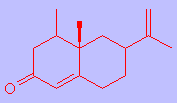 |
Any visitor to an Indonesian market or dinner table will almost certainly come across tempe (below left), though wonder what on earth it really is. Closely resembling a Camembert cheese in colour and texture with a mushroom-like aroma, tempe is in fact one of the world's first soybean foods. It is composed of cooked soybeans that have been fermented through by an edible fungus which, when mature (like a cheese) becomes an attractive and aromatic white cake suitable for a variety of uses in hundreds of local dishes.
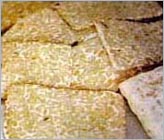
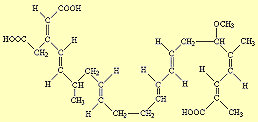
But deep in the mountain villages in Central Java, there used to be one rare deadly variety of tempe. Very rare nowadays, and never sold openly anymore, this tempe has killed hundreds. So dangerous is this tempe that the government has banned manufacture of it and imposed a prison sentences to anybody caught making or selling it, since this tempe can contain a toxin more deadly than cyanide. This is tempe Bongkrek. Made from coconut residue after the oil has been extracted, and nothing like good safe soybean tempe, this tempe has the problem that it may become contaminated with a deadly bacterium that lives on the fermented coconut, called Pseudomonas. The coconut only grows the bacterium if it is heavily contaminated, and may produce a deadly respiratory toxin called Bongkrekic acid (above right). In 1988 one batch killed 40 people within two days and over a hundred others were hospitalised. The community in this area, well aware of the risks, have nevertheless continued to eat Bongkrek despite a ban by the government, so irresistible is the taste and texture of this dangerous and illicit pleasure.
Thanks to Tim Lyon for suggesting this molecule.
BarreleneThis molecule is closely related to bullvalene, and got its name from its similarity to the shape and structure of a barrel. Peter Lykos emailed me to say how it happened: "When Howie Zimmerman was getting started at Northwestern University I heard he had synthesized a molecule that in effect was three ethylene molecules condensed about two methyl axes. I could not give it the correct organic chemist's systematic name (I am a quantum chemist) but was fascinated by the notion that there might be a delocalization of six π-electrons around the molecule. So when I called him about its spectroscopic properties I referred to it as 'barrelene' following the idea that the lateral delocalization mught be like the staves of a barrel. He apparently liked that name so that became its trivial standard name". Thanks to Peter Lykos for suggesting this molecule. |
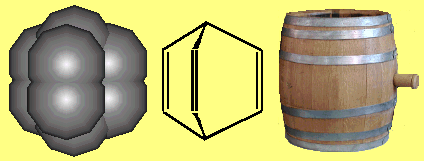 |
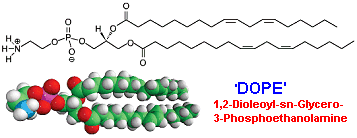 |
DOPEApparently, DOPE is commonly used by membrane chemists and biochemists - which is something I've always suspected... It's actually short for 1,2-Dioleoyl-sn-Glycero-3-Phosphoethanolamine, and it's a phospholipid used for research into membrane structures. A variant on this is called DOGS, so if you take DOPE, you may go to the DOGS... Thanks to Sophie Weiss of Leeds University for suggesting this molecule. More info from www.avantilipids.com |
![]()